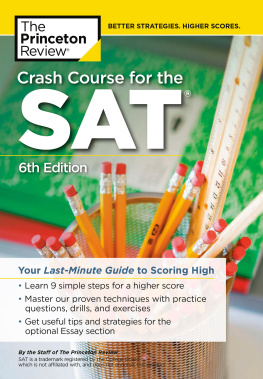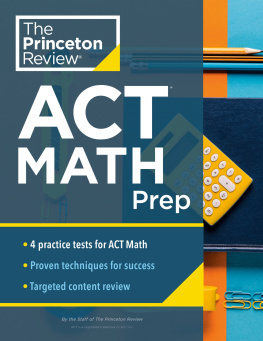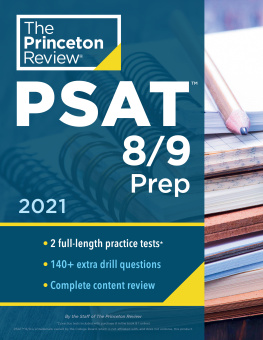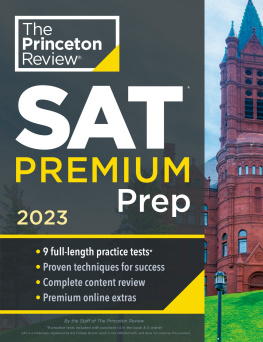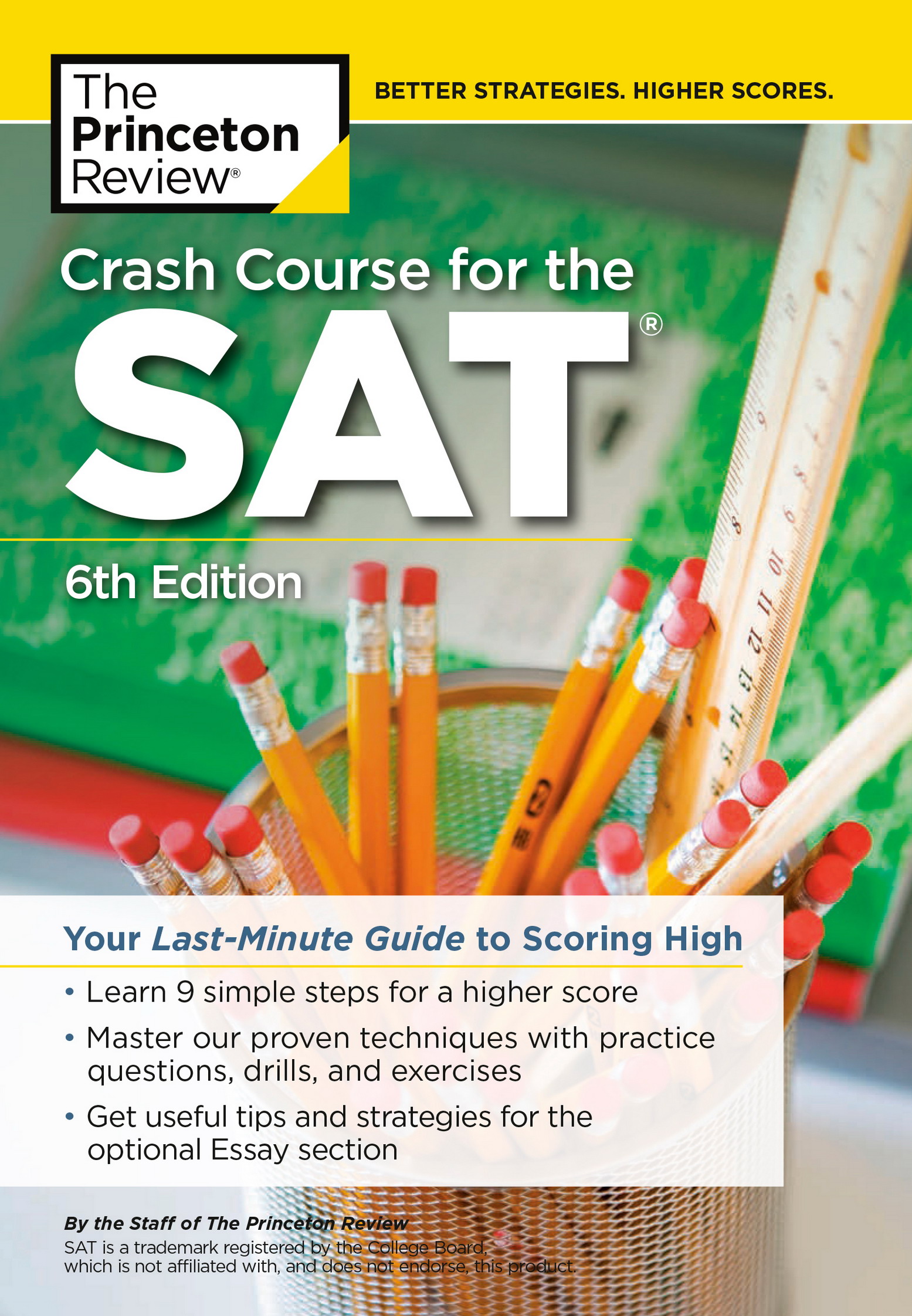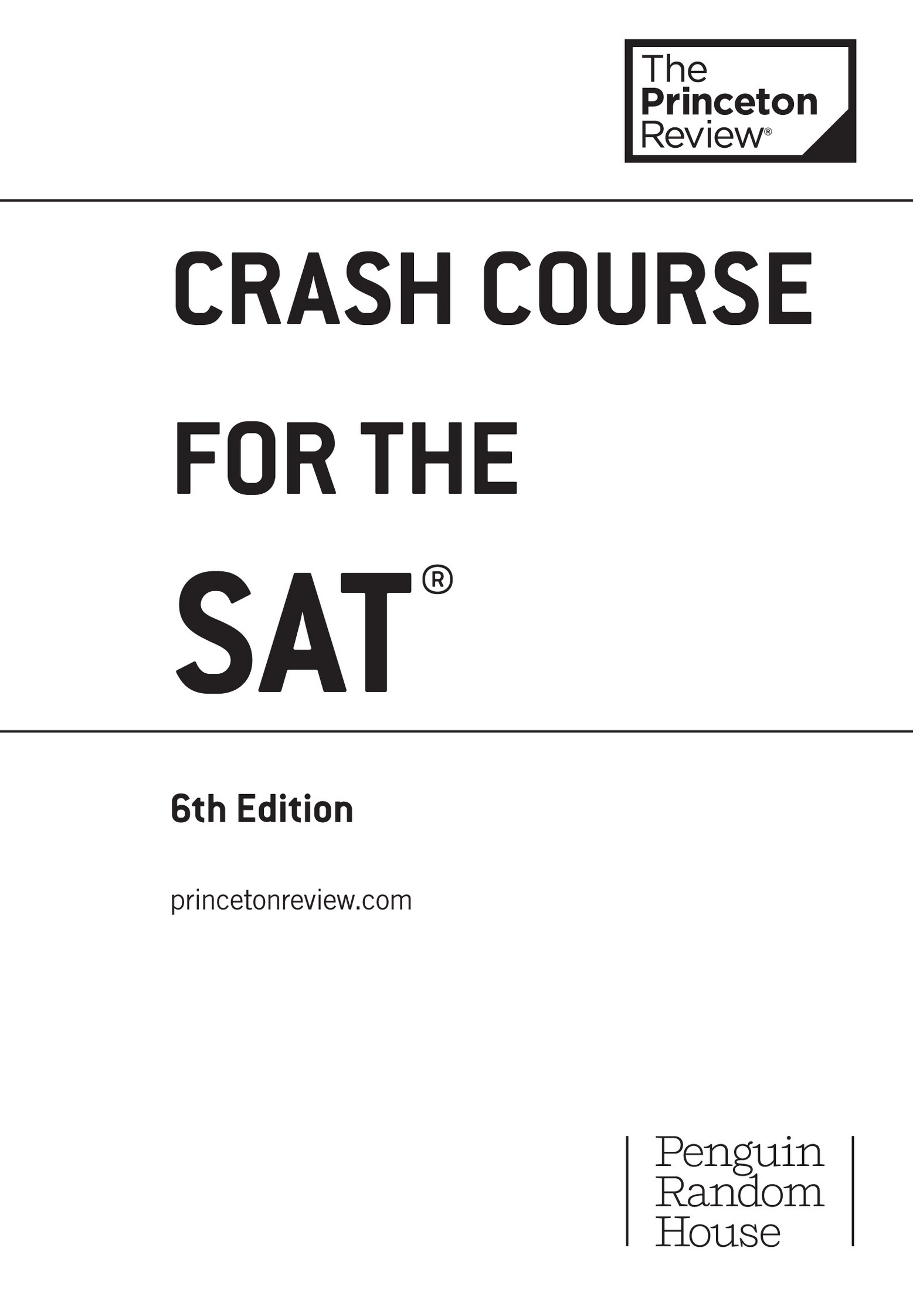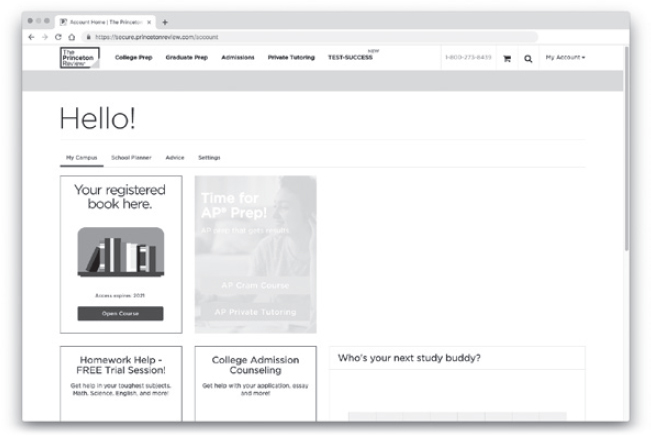Editorial
Rob Franek, Editor-in-Chief
David Soto, Director of Content Development
Stephen Koch, Student Survey Manager
Deborah Weber, Director of Production
Gabriel Berlin, Production Design Manager
Selena Coppock, Managing Editor
Aaron Riccio, Senior Editor
Meave Shelton, Senior Editor
Christopher Chimera, Editor
Sarah Litt, Editor
Orion McBean, Editor
Brian Saladino, Editor
Eleanor Green, Editorial Assistant
Penguin Random House Publishing Team
Tom Russell, VP, Publisher
Alison Stoltzfus, Publishing Director
Amanda Yee, Associate Managing Editor
Ellen Reed, Production Manager
Suzanne Lee, Designer
The Princeton Review
110 East 42nd Street, 7th Floor
New York, NY 10017
E-mail:
Copyright 2019 by TPR Education IP Holdings, LLC. All rights reserved.
Published in the United States by Penguin Random House LLC, New York, and in Canada by Random House of Canada, a division of Penguin Random House Ltd., Toronto.
Trade Paperback ISBN9780525569145
Ebook ISBN9780525569152
SAT is a trademark registered and owned by the College Board, which is not affiliated with and does not endorse this product.
The Princeton Review is not affiliated with Princeton University.
Editor: Orion McBean
Production Editors: Jim Mellon and Emma Parker
Production Artists: Deborah Weber
Cover art by Tetra Images / Alamy Stock Photo
Cover design by Suzanne Lee
The material in this book is up-to-date at the time of publication. However, changes may have been instituted by the testing body in the test after this book was published.
If there are any important late-breaking developments, changes, or corrections to the materials in this book, we will post that information online in the Student Tools. Register your book and check your Student Tools to see if there are any updates posted there.
v5.4
a
Acknowledgments
The Princeton Review would like to give a special thanks to Amy Minster for her extraordinary effort and expertise in revising this title.
Special thanks to Adam Robinson, who conceived of and perfected the Joe Bloggs approach to standardized tests and many of the other successful techniques used by the Princeton Review.
And last but certainly not least, the editorial team would like to extend a huge thank you to The Princeton Reviews High School Content Director, Aaron Lindh.
Contents
Go to PrincetonReview.com/cracking and enter the following ISBN for your book: 9780525569152
Answer a few simple questions to set up an exclusive Princeton Review account. (If you already have one, you can just log in.)
Enjoy access to your FREE content!
Need to report a potential content issue?
Contact and include:
full title of the book
ISBN
page number
Need to report a technical issue?
Contact and provide:
your full name
email address used to register the book
full book title and ISBN
Operating system (Mac/PC) and browser (Firefox, Safari, etc.)
Once youve registered, you can
Access bonus math drills to practice the techniques that you will learn in this book.
Download material for the optional Essay section, including style elements, a sample template, and practice prompts.
Introduction
About this Book
If youre worried about the SAT, youre not alone. Your parents and teachers are probably driving you crazy with conflicting SAT information, so its only normal to feel anxious. While the SAT is a very important test you should care about, The Princeton Review is here to assure you that reading this book is the first step to relaxing your nerves and feeling confident about the test!
This book will help you become acquainted with the SAT and improve your score on the test, all in nine simple steps that cover the Reading, Writing and Language, and Math sections of the test. Well tell you everything you need to know about the content and format of the SAT and show you our proven strategies for increasing your score. After working through our nine-step crash course, youll be a more confident and more prepared test taker.
What is the SAT?
The SAT is a three-hour-and-50-minute (with the optional Essay) standardized test used by many colleges as a factor in undergraduate admissions and placement decisions. The SAT consists of Evidence-Based Reading and Writing, Math, and an optional essay.
The test includes four sections in the following order: an Evidence-Based Reading section, an Evidence-Based Writing section, a no-calculator Math section, and a calculator-permitted Math section. Lastly, the optional essay section is at the end of the test.
The first section, Reading, takes 65 minutes and contains 52 multiple-choice questions based on 5 passages. There will be a short break before the Writing section, which takes 35 minutes and contains 44 multiple-choice questions based on 4 passages. Some of the passages in the Reading and Writing sections may contain graphs and figures. The Reading and Writing sections are used to calculate a single Evidence-Based Reading and Writing score on a 200800 point scale.
The third section is a 25-minute no-calculator section with 15 multiple-choice questions and 5 grid-in questions. The final required scored section is a 55-minute calculator-permitted section with 30 multiple-choice questions and 8 grid-in questions. The two Math sections are used to calculate a Math score on a scale of 200800.
As some colleges require that students submit essay scores, many students will stay for a 50-minute rhetorical analysis essay. The essay section will consist of a source text that you will be expected to read and analyze. You will need to write a response that explains how the author builds an argument based on evidence, reasoning, and stylistic elements. The essay is scored on a scale of 14 in three different categories (Reading, Analysis, Writing). Each essay is scored by two graders, and the scores are combined for a total score of 28 in each of these three categories. This essay score is a separate score and is not factored into your 200800 Reading and Writing score. If you opt not to take the essay section, you may be given a short experimental section instead that will not count towards your score. Even if you take the essay, you may still have an extra section on your test. This means that some of the questions within the test, on that section or possibly elsewhere, are not counted toward your score. Just treat every question as if it is a scored question and do your best on it.

